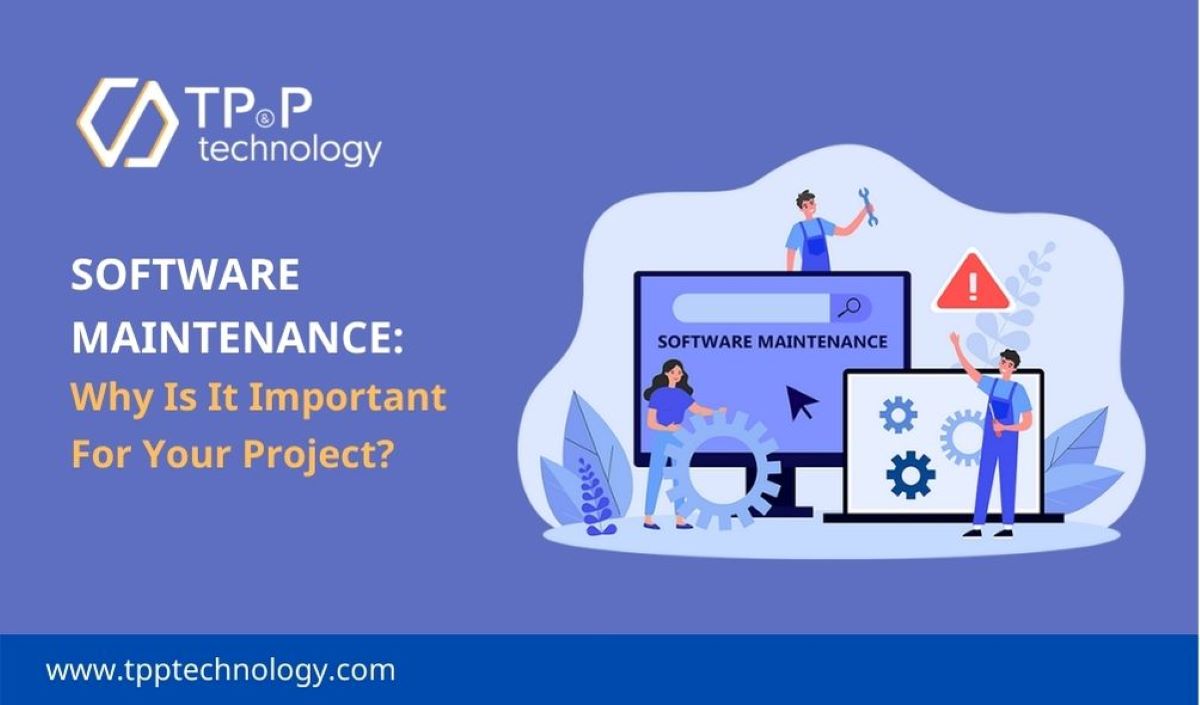
Software Maintenance: Why Is It Important For Your Project?
Software maintenance is an essential part of the entire software development process. Many software development outsourcing companies advise their customers to take on software maintenance because it allows solutions to apply to changing technological and business situations and helps system performance improvement and be consistent.
However, many businesses are too focused on completing the development part of their software projects that they forget or leave out the post-project management and maintenance tasks.
Overview of Software Maintenance
Software maintenance refers to the type of activities that helps to fix faulty issues, at the same time improving the system performance - ultimately staying up to date with client needs and the market.
Software maintenance is a part of the software development life-cycle (SDLC). Specifically, the main pursuit of software maintenance is to update and revamp the software applications after deployments.
The software maintenance operations take place once the software is developed or deployed. As a result, maintaining software applications enhances its performance where software errors, bugs, and redundant developments are resolved and reduced. Modern development methodologies can also be adopted as well as other important factors like security and scalability are considered.
Different Types of Software Maintenance Services
Below are the four main types of software maintenance:
Corrective is about correcting errors, faults, and software defects. These mistakes are observed while the software is in use or errors in software design, logic, or code. They may come to your attention across error reports or bugs from end-user feedback.
Perfective is the process of adjusting software as necessary in order to adapt to the customer’s changing needs. In some cases, perfective software maintenance includes removing unnecessary or redundant features is also a function of perfective software maintenance.
Adaptive is the modification of software to keep it usable after a change to its operating environment. This may be related to hardware updates, operating system updates, or changes to infrastructure. Environmental changes can also include vendor changes, links to new or existing ancillary systems, or even policies related to security or industry compliance.
Preventive is similar to a technical bandage. It involves smaller, incremental, adjustments to software applications so that they can work for longer periods of time.
How to prepare a software project from development to maintenance?
Identify team leaders
Leaders from the project team, which may development leads, business analysts, or other stakeholders. They can help decrease threats and facilitate a seamless transition and should be kept in touch with maintenance team leaders. The responsible of a leader is to talk about new software applications or change current service level agreements (SLAs)
Budget for the transition
It is important to include transitioning from development to maintenance in your project budget. Be sure stakeholders understand the importance of a proper support strategy. This budget may also include the need to add additional support staffs that will be needed post-implementation.
Start Early
Remember to avoid the drop-and-run approach to transitioning projects from development to maintenance. Besides, dev companies let maintenance teams grow development teams before completing everything, include maintenance teams in meetings, and update everyone on important decisions.
Including maintenance team members early on is the chance for the development team to understand the current state of existing architecture and current software applications being used by an organization.
Communication
The maintenance team may not know how needs were identified, why decisions were made, or priorities were defined, Therefore, by communicating details, maintenance teams can support the software application and empathy and ownership when they need to.
Documentation
Documentation is a dire part of the support procedure. Skilled technology professionals learn to anticipate the details that should be documented to help guide support tasks later on. Think about end-users that may research justifications for the way features or functionality were implemented, and consider the reasons why decisions were made.
A secondary benefit of documentation will be felt with future development efforts. Don’t assume updates or bug fixes will always be done by the same developers.
Documentation elements to include:
- Overview
- References
- Assumptions
- Contacts
- Licensing and agreements
- Diagrams and prototypes with functional and feature lists and summaries
- Details about the configuration, such as directory structure and administrative functions
- Start-up, shutdown, backup, recovery, and archiving are all operational elements.
- Details on security
Knowledge transfer procedure
Documentation only is not enough, though it is a part of the changeover procedure. The trick is to understand and respect the roles of everyone’s job on each team, knowing each has subject matter expertise that may not be known by the other.
Companies must make sure that the transition procedure includes time in the schedule for a little overlap. As support requests begin to filter in, it can be helpful to have a resource the maintenance team can call on to get advice and assistance.
That said, be sure the service’s duration is clearly defined and communicated. Creating a clear line drawn assists with feelings of ownership and allows both teams to properly move forward.
This also means that the service’s duration must remain explicitly specified and stated for all parties involved. The ability to create a clear line aids sentiments of ownership. Having a clear line drawn assists with feelings of ownership and allows both teams to properly move forward.
Encourage questions and ongoing conversations. There may be things the others haven’t thought of or third-party systems that may unknowingly impact or be impacted by a proposed implementation.
Despite the fact that each software development project is different in terms of scale and complexity, each transition process helps with standardization and learning. When post-implementation and transition meetings happen with maintenance teams, everyone has a chance to review lessons learned and establish best practices.
Even though every software development project is different, with varying scope and complexity, each transition process helps with standardization and learning. Maintenance teams should conduct post-implementation and transition meetings to review lessons learned and establish best practices.



